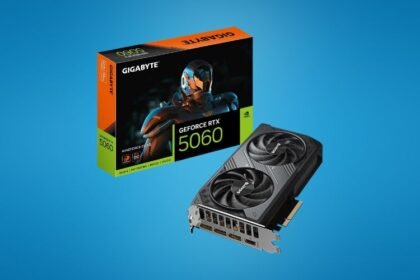The gaming community has been buzzing with excitement following recent NVIDIA RTX 50 Super price leak information that suggests these upcoming graphics cards could deliver exceptional value. After months of speculation, pricing details have emerged that paint an encouraging picture for PC gamers looking to upgrade their systems.
- Breaking Down the NVIDIA RTX 50 Super Price Leak
- What You’re Getting for Your Money
- Release Date Confusion and Clarity
- Why This NVIDIA RTX 50 Super Price Leak Matters
- Market Strategy Behind the Pricing
- What Gamers Should Consider
- The Bigger Picture for PC Gaming
- Should You Wait for the Super Cards?
- Final Thoughts
Breaking Down the NVIDIA RTX 50 Super Price Leak
Recent leaks indicate that NVIDIA’s upcoming RTX 50 Super series graphics cards will be priced identically to their non-Super counterparts, with the RTX 5080 Super expected at $999, the RTX 5070 Ti Super at $749, and the RTX 5070 Super at $549. This represents a significant shift from earlier rumors that suggested these cards would cost $50 to $150 more than the original models.
According to sources with a strong track record for NVIDIA information, the company has downward-adjusted the MSRPs of its upcoming Super models ahead of launch, with the RTX 5080 Super dropping $150 from its originally planned $1,149 price point.
What You’re Getting for Your Money
The most impressive aspect of this NVIDIA RTX 50 Super price leak isn’t just the competitive pricing—it’s what you’re getting at these price points. Each GPU in the Super lineup will receive a 50% memory capacity boost, primarily through memory upgrades featuring 3GB GDDR7 memory chips instead of the previous 2GB modules.
Here’s what the leaked specifications reveal:
RTX 5070 Super ($549)
- 6,400 CUDA cores (a 4% increase over the standard RTX 5070)
- 18GB GDDR7 memory with 28 Gbps bandwidth on a 192-bit bus interface
- 350W TGP, representing a 50W increase
RTX 5070 Ti Super ($749)
- 8,960 CUDA cores
- 24GB GDDR7 memory with 28 Gbps bandwidth and 256-bit bus interface
- 350W TGP, a 50W jump over the non-Super version
RTX 5080 Super ($999)
- Higher CUDA core count than the 5070 Ti Super
- 24GB GDDR7 VRAM
- Increased memory bandwidth and higher TGP
Both the RTX 5070 Ti Super and RTX 5080 Super are expected to deliver 24GB of GDDR7 VRAM, marking the first time a 24GB graphics card has launched significantly below $1,000.
Also Read: RTX 5060 Graphics Card Benchmarks: The Complete U.S. Buyer’s Guide for 2025
Release Date Confusion and Clarity
The timeline for these cards has been somewhat uncertain. According to reliable leaker Moore’s Law is Dead, RTX 5080 Super, 5070 Ti Super, and 5070 Super GPUs are set to launch in Q4 2025, which would be a departure from NVIDIA’s typical refresh cycle.
This would be an interesting release, as NVIDIA’s Super models generally launch around 12 months after the release of the base models, with the original RTX 50-series announced at CES 2025 and launched at the end of January. However, some reports suggest the upgraded cards may not show up until CES 2026, with board partners expecting RTX 50 Supers to be revealed at that event.
Why This NVIDIA RTX 50 Super Price Leak Matters
For US gamers, this pricing strategy represents a compelling value proposition. If accurate, NVIDIA’s RTX 50 Super series will deliver a considerable value uplift for PC gamers, allowing them to purchase graphics cards with boosted specifications without an increased price tag over NVIDIA’s initial RTX 50 series prices.
The memory upgrades are particularly significant. Modern AAA games are increasingly demanding when it comes to VRAM, and the jump from 12GB to 18GB on the RTX 5070 Super addresses a major pain point for gamers targeting high-resolution gameplay with maximum texture settings.
Market Strategy Behind the Pricing
Sources indicate that NVIDIA expects current-generation RTX 50 series GPUs to lower in price due to lessening demand, with these price decreases expected to increase demand and prevent oversupply. This suggests NVIDIA is being strategic about maintaining market momentum while introducing improved products.
The pricing also positions NVIDIA competitively against AMD’s offerings. AMD’s former flagship RX 7900 XTX launched for $999, while the RTX 4090 set buyers back $1,600 before price increases for AIB and scalped Founders Edition cards.
What Gamers Should Consider
While this NVIDIA RTX 50 Super price leak is encouraging, potential buyers should keep several factors in mind:
Power Requirements: The increased TGP on these cards means you’ll need to ensure your power supply can handle the additional wattage. The RTX 5070 Super and 5070 Ti Super both feature 350W TGP, while the 5080 Super is expected to draw even more power.
Availability: NVIDIA’s recent launches have been plagued by supply constraints. Even with competitive pricing, getting your hands on these cards at MSRP may prove challenging, especially during the initial launch period.
AIB Pricing: The leaked prices represent MSRP for Founders Edition cards. Third-party manufacturers typically add premiums for custom cooling solutions, RGB lighting, and factory overclocks.
The Bigger Picture for PC Gaming
This pricing approach from NVIDIA could signal a shift in how the company approaches GPU launches. Rather than commanding premium prices for incremental upgrades, the company appears to be focusing on delivering tangible improvements—particularly in VRAM capacity—without asking customers to pay more.
For gamers building new systems or upgrading from older hardware, the 18GB and 24GB VRAM configurations should provide excellent longevity. These memory capacities are well-suited for:
- 4K gaming with maximum texture settings
- Content creation and video editing
- AI-powered features and upscaling technologies
- Future-proofing against increasingly demanding game releases
Should You Wait for the Super Cards?
If you’re considering a GPU purchase in late 2025 or early 2026, the NVIDIA RTX 50 Super price leak suggests waiting could be worthwhile. Getting 50% more VRAM at the same price point represents substantial added value, especially for the RTX 5070 Super’s jump from 12GB to 18GB.
However, if you need a graphics card immediately, current RTX 50 series pricing may become more attractive as inventory is cleared ahead of the Super launches.
Final Thoughts
The NVIDIA RTX 50 Super price leak paints an optimistic picture for US gamers seeking high-performance graphics cards. While nothing is official until NVIDIA makes an announcement, the consistency across multiple sources suggests these prices are likely accurate.
The combination of increased VRAM, modest performance improvements, and price parity with current models could make the Super series one of the most compelling GPU launches in recent years. As always with leaks, take this information with appropriate skepticism, but the signs are certainly encouraging for anyone planning a gaming PC upgrade.
For the latest updates on official pricing and availability, keep watching for NVIDIA’s announcement, which may come as early as Q4 2025 or at CES 2026. In the competitive world of PC gaming hardware, this NVIDIA RTX 50 Super price leak suggests the company is ready to deliver serious value to consumers who’ve been waiting for next-generation performance upgrades.










